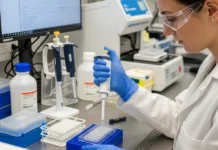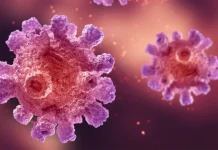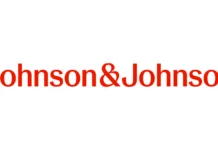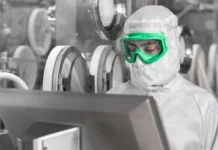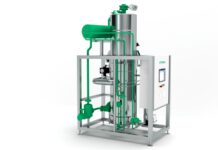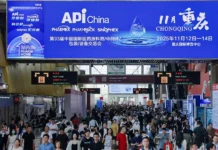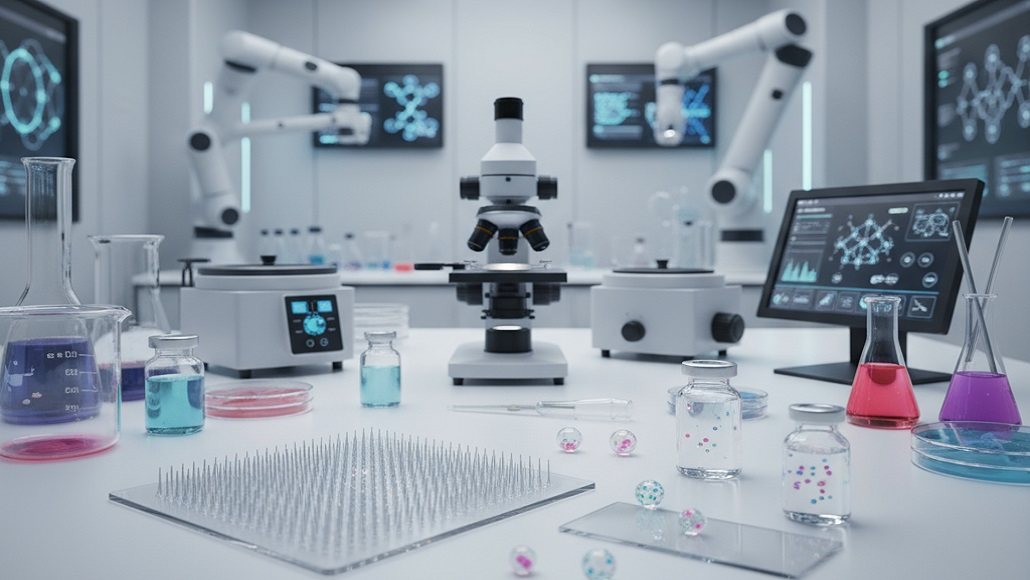Enhancing Bioavailability Through Advanced Drug Delivery Platforms
The pharmaceutical industry confronts an enduring challenge where promising therapeutic molecules fail clinical translation due to inadequate bioavailability. Advanced drug delivery bioavailability enhancement has emerged as a critical enabler transforming compounds with poor pharmacokinetic profiles into viable therapeutics. These sophisticated platforms, ranging from nanocarriers and microneedles to stimuli-responsive polymers and targeted delivery systems, address fundamental obstacles limiting drug absorption, distribution, and therapeutic efficacy through innovative engineering of drug-carrier interactions and biological barrier navigation.
Understanding Bioavailability and Its Clinical Significance
Bioavailability quantifies the fraction of administered drug reaching systemic circulation in pharmacologically active form. For intravenous administration, bioavailability by definition equals 100%, as drugs enter circulation directly. Other routes, particularly oral delivery, encounter numerous obstacles reducing bioavailability through incomplete absorption, first-pass hepatic metabolism, intestinal metabolism, and efflux transporter activity. Many promising drug candidates exhibit bioavailability below 10%, rendering therapeutic dosing impractical or impossible.
The biopharmaceutics classification system categorizes drugs based on solubility and permeability characteristics, with Class II (low solubility, high permeability) and Class IV (low solubility, low permeability) compounds representing formulation challenges where advanced drug delivery bioavailability strategies prove essential. Over 70% of drug candidates in development pipelines demonstrate poor aqueous solubility, while additional compounds suffer from enzymatic degradation, efflux-mediated resistance, or insufficient membrane permeation.
Poor bioavailability manifests clinically through therapeutic failures, excessive dose requirements, high inter-patient variability, and unpredictable pharmacokinetics. Patients receiving oral medications with 5% bioavailability effectively waste 95% of each dose, creating economic inefficiency and potentially causing local gastrointestinal toxicity from unabsorbed drug. Variable bioavailability produces inconsistent therapeutic responses, with some patients achieving efficacy while others experience treatment failures or adverse effects from unexpectedly high exposures.
Nanocarrier Systems Revolutionizing Drug Delivery
Nanoparticles, typically ranging from 1 to 200 nanometers, fundamentally alter drug pharmacokinetics through mechanisms including enhanced solubilization, protection from degradation, facilitation of cellular uptake, and targeted accumulation at disease sites. These nanoscale dimensions confer unique properties including enormous surface area-to-volume ratios, ability to traverse biological barriers inaccessible to larger particles, and quantum mechanical effects influencing interactions with biological systems.
Polymeric nanoparticles constructed from biodegradable polymers including poly(lactic-co-glycolic acid), polylactic acid, and chitosan enable controlled drug release while protecting encapsulated therapeutics from premature degradation. Drug loading occurs through encapsulation during nanoparticle formation or surface conjugation, with release kinetics governed by polymer degradation rates, drug diffusion through polymer matrices, and environmental triggers such as pH or enzymatic activity. The versatility of polymeric systems accommodates diverse drug classes including small molecules, proteins, and nucleic acids.
Lipid-based nanocarriers including liposomes, solid lipid nanoparticles, and lipid-polymer hybrid systems leverage the amphiphilic nature of lipids to solubilize hydrophobic drugs while maintaining biocompatibility. Liposomes, consisting of phospholipid bilayers surrounding aqueous cores, can encapsulate both hydrophilic drugs in the aqueous compartment and hydrophobic drugs within lipid bilayers. Surface modifications with polyethylene glycol create stealth liposomes that evade rapid clearance by the reticuloendothelial system, extending circulation time and enhancing accumulation at target sites through enhanced permeability and retention effects.
Solid lipid nanoparticles combine advantages of polymeric and lipid systems, featuring solid lipid cores that provide sustained release while maintaining excellent biocompatibility and scalable manufacturing. These systems demonstrate particular utility for highly lipophilic drugs where loading capacity in other systems proves insufficient. The solid state at body temperature prevents premature drug release, enabling prolonged therapeutic action from single administrations.
Dendrimers represent precisely engineered, highly branched polymeric structures with nanoscale dimensions and defined molecular architecture. The internal cavities and surface functional groups enable high drug loading through encapsulation or covalent conjugation. Multivalent surface functionalization with targeting ligands, imaging agents, and therapeutic molecules creates multifunctional platforms for theranostic applications combining diagnosis and therapy.
Metal and metal oxide nanoparticles including gold, silver, iron oxide, and quantum dots offer unique optical, magnetic, or catalytic properties enabling applications beyond simple drug carriage. Gold nanoparticles demonstrate surface plasmon resonance enabling photothermal therapy when irradiated with near-infrared light. Iron oxide nanoparticles provide magnetic properties useful for magnetic resonance imaging and magnetically guided drug targeting. While these inorganic systems show promise, biocompatibility and long-term safety require careful evaluation.
Mechanisms of Nanocarrier-Mediated Bioavailability Enhancement
Advanced drug delivery bioavailability improvement through nanocarriers operates via multiple synergistic mechanisms addressing different aspects of the absorption process. Solubilization enhancement represents the most direct mechanism, as nanoencapsulation presents poorly soluble drugs in forms facilitating dissolution and absorption. The nanoscale dimensions provide enormous surface area promoting rapid dissolution, while stabilizing agents prevent precipitation and aggregation that would reduce solubility.
Protection from degradation proves particularly valuable for biologics and chemically labile small molecules susceptible to acidic, enzymatic, or oxidative degradation in gastrointestinal environments. Nanocarrier encapsulation shields drugs from these hostile conditions, preserving intact drug until release at absorption sites. Studies demonstrate that protein drugs encapsulated in nanoparticles retain activity following oral administration, whereas free proteins undergo complete degradation.
Cellular uptake enhancement occurs through multiple pathways including receptor-mediated endocytosis, clathrin-mediated uptake, caveolae-dependent internalization, and macropinocytosis. The nanoscale dimensions enable cellular internalization mechanisms unavailable to larger particles or free drugs. Surface decoration with targeting ligands such as transferrin, folate, or cell-penetrating peptides directs nanocarriers to specific cell types expressing cognate receptors, enhancing selectivity and intracellular delivery.
Mucus penetration capabilities distinguish well-designed nanocarriers from conventional formulations. The mucus layer covering gastrointestinal epithelium represents a formidable barrier that traps most particles through steric obstruction or adhesive interactions. Surface modification with hydrophilic polymers such as polyethylene glycol creates muco-inert surfaces that slip through mucus networks, accessing underlying epithelial surfaces where absorption occurs. Studies show properly designed nanoparticles traverse mucus layers hundreds of times faster than unmodified particles.
Efflux pump inhibition or evasion represents another mechanism enhancing bioavailability for drugs subject to active efflux by P-glycoprotein and related transporters. Nanoencapsulation can inhibit efflux pump activity through surfactants or polymers that modulate transporter function. Alternatively, rapid cellular uptake via endocytosis bypasses apical efflux pumps, as internalized drug avoids exposure to these membrane-bound transporters.
Lymphatic transport provides an alternative absorption pathway bypassing first-pass hepatic metabolism for highly lipophilic drugs formulated with long-chain lipids. Following intestinal absorption, these formulations preferentially incorporate into chylomicrons transported via lymphatic vessels to systemic circulation, avoiding portal blood flow to the liver. This mechanism dramatically enhances bioavailability for drugs extensively metabolized during hepatic first-pass.
Microneedle Technology Transforming Transdermal Delivery
Microneedles represent a revolutionary approach to transdermal drug delivery, creating microscopic channels through the stratum corneum that enable delivery of drugs unable to penetrate intact skin. These arrays of micron-scale projections, typically 25 to 2000 micrometers in length, puncture only the outermost skin layers, avoiding nerve endings and blood vessels that cause pain. The minimally invasive nature combines advantages of transdermal delivery including avoidance of first-pass metabolism with the convenience and painlessness favoring patient acceptance and adherence.
Solid microneedles fabricated from metals, silicon, or hard polymers create microchannels in skin through which drug formulations subsequently apply. The mechanical strength of solid materials enables reliable skin penetration even in challenging anatomical locations. Following microchannel creation, removal of the microneedle array allows application of drug formulations that diffuse through the created pathways. This approach accommodates diverse formulation types including solutions, suspensions, and gels.
Coated microneedles feature drug formulations dried onto solid microneedle surfaces. Skin insertion dissolves or releases coatings, delivering drugs while leaving microneedle substrate intact. The coating approach enables precise dose control through coating thickness and composition, while rapid dissolution ensures delivery occurs during the brief insertion period. Limitations include relatively low drug loading capacity constrained by coating thickness.
Dissolving microneedles fabricated from water-soluble materials including sugars, polymers, or proteins completely dissolve following skin insertion, leaving no sharp waste requiring disposal. Drug dispersed throughout the microneedle matrix releases as the material dissolves, with release kinetics controlled by material properties and microneedle geometry. The self-disabling nature eliminates needlestick injury risks and simplifies disposal, particularly valuable for self-administration scenarios.
Hollow microneedles function analogously to conventional hypodermic needles but at microscale dimensions, enabling controlled infusion of liquid formulations through central bore structures. Pumps or pressure drive formulation through hollow cores, delivering precise volumes to desired skin depths. This approach accommodates large doses and enables controlled release over extended periods, though manufacturing complexity and potential for microneedle blockage present challenges.
The bioavailability advantages of microneedles stem from bypassing the stratum corneum barrier that limits transdermal drug delivery to small, lipophilic molecules. Biopharmaceuticals including proteins, peptides, and vaccines achieve systemic delivery via microneedle-created microchannels, with bioavailabilities approaching or equaling subcutaneous injections. Studies demonstrate insulin delivery via microneedle patches producing glucose-lowering effects comparable to conventional injections, validating the technology for routine biologic administration.
Hydrogels and Bioresponsive Polymers for Controlled Release
Hydrogels, three-dimensional networks of hydrophilic polymers capable of absorbing large quantities of water while maintaining structural integrity, provide platforms for sustained drug release following minimally invasive administration. Injectable hydrogels that remain liquid during administration but solidify in situ after injection form depots providing prolonged drug release without requiring surgical implantation. The gelation may occur through temperature changes, pH shifts, ionic crosslinking, or photoinitiated polymerization, with selection depending on drug stability requirements and desired administration route.
Thermosensitive hydrogels based on polymers such as poly(N-isopropylacrylamide) or Pluronic copolymers exhibit lower critical solution temperatures below which they remain liquid but above which they gel. Formulations designed with transition temperatures between room temperature and body temperature remain fluid during injection but solidify upon reaching body temperature, forming solid depots. Drug release from these gels occurs through diffusion or erosion-controlled mechanisms, with durations extending from days to months depending on gel composition and crosslink density.
pH-responsive hydrogels swell or shrink in response to environmental pH changes, modulating drug release accordingly. Polymers containing ionizable groups such as carboxylic acids or amines undergo charge state changes with pH shifts, altering electrostatic repulsion between polymer chains and thus swelling behavior. Formulations exploiting pH gradients along the gastrointestinal tract can target drug release to specific intestinal segments where pH conditions trigger gel swelling and drug release.
Enzyme-responsive hydrogels incorporate substrate sequences recognized by specific enzymes, enabling release triggered by disease-associated enzymatic activity. Cancer cells often overexpress matrix metalloproteinases that degrade extracellular matrix components. Hydrogels crosslinked with peptide sequences cleaved by these enzymes selectively degrade in tumor environments, releasing encapsulated drugs at disease sites while remaining stable in healthy tissues. This targeted approach concentrates therapeutic effects while minimizing systemic exposure and toxicity.
Advanced Platforms for Protein and Biologic Delivery
Biopharmaceuticals including monoclonal antibodies, therapeutic proteins, and peptides represent the fastest-growing pharmaceutical segment, yet delivery remains challenging due to susceptibility to degradation, poor membrane permeability, and immunogenicity concerns. Advanced drug delivery bioavailability strategies specifically addressing biologic characteristics enable administration routes beyond conventional injections, improving patient convenience and adherence.
Oral delivery of biologics requires protection from gastric acid and proteolytic enzymes while facilitating absorption across intestinal epithelium. Enteric-coated nanoparticles shield proteins from gastric degradation, releasing contents at neutral intestinal pH. Permeation enhancers including medium-chain fatty acids or bile salts transiently disrupt tight junctions between epithelial cells, creating paracellular pathways for protein absorption. While oral bioavailability of proteins remains substantially below injectable routes, improvements from negligible to several percent can enable therapeutic efficacy for highly potent biologics.
Pulmonary delivery exploits the enormous alveolar surface area and thin epithelial barriers optimized for gas exchange but also permeable to macromolecules. Inhalation of protein formulations produces rapid systemic absorption with bioavailabilities rivaling injections for some proteins. The non-invasive administration and potential for self-administration make pulmonary delivery attractive for chronic diseases requiring frequent dosing. Dry powder inhaler formulations provide stability advantages over liquid formulations while enabling portable delivery devices.
Transmucosal delivery via buccal, sublingual, nasal, or rectal routes provides additional options for avoiding first-pass metabolism while achieving reasonable bioavailability for select biologics. The mucosae lining these sites demonstrate intermediate permeability between skin and intestinal epithelium, enabling absorption of small proteins and peptides. Mucoadhesive formulations prolong residence time at absorption sites, maximizing opportunity for drug uptake.
Rational Design Principles for Delivery Platform Selection
Successful application of advanced drug delivery bioavailability strategies requires matching platform characteristics to drug properties and therapeutic requirements. Highly lipophilic drugs benefit from lipid-based carriers or solid dispersions, while hydrophilic compounds may require permeation enhancers or alternative routes bypassing membrane barriers. Chemically labile drugs need protective carriers, while stable compounds may only require solubilization enhancement.
The therapeutic indication influences delivery platform selection. Chronic diseases benefit from sustained-release formulations reducing dosing frequency and improving adherence. Acute conditions may require rapid drug release and quick onset of action. Diseases with well-defined biomarkers or localized pathology justify targeted delivery approaches, while systemic conditions may not benefit from sophisticated targeting.
Patient factors including age, disease severity, and ability to self-administer medications guide delivery route and device design. Pediatric and geriatric patients may require alternative formulations addressing swallowing difficulties or cognitive impairments. Patients with needle phobia benefit from non-invasive delivery options. Consideration of patient preferences and practical constraints improves real-world treatment outcomes beyond pharmacological efficacy alone.
Regulatory and Manufacturing Considerations
Translation of advanced drug delivery bioavailability platforms from research to clinical products requires navigating complex regulatory pathways ensuring safety, efficacy, and consistent quality. Novel delivery systems face heightened regulatory scrutiny compared to conventional formulations, necessitating extensive characterization of materials, thorough toxicology assessments, and demonstration of manufacturing reproducibility.
Nanoparticle formulations require comprehensive physicochemical characterization including size distribution, surface charge, morphology, drug loading, release kinetics, and stability under various storage conditions. Biological characterization encompasses biocompatibility testing, immunogenicity assessment, and pharmacokinetic studies comparing delivery platforms to reference formulations. Quality by design approaches identify critical quality attributes and establish control strategies ensuring batch-to-batch consistency.
Manufacturing scalability represents a critical consideration, as laboratory-scale production methods frequently prove incompatible with commercial-scale manufacturing. Continuous manufacturing processes offer advantages over batch production for certain platforms, improving reproducibility while reducing facility footprints. Investment in process development early in product development facilitates smoother transitions to commercial manufacturing, avoiding late-stage surprises that could delay market entry.
Future Directions and Emerging Technologies
The future of advanced drug delivery bioavailability enhancement promises continued innovation addressing remaining limitations and expanding applications. Cell-penetrating peptides and novel permeation enhancers will improve delivery of large molecules including nucleic acids for gene therapy applications. Stimuli-responsive systems triggered by disease-specific biomarkers will provide increasingly sophisticated targeted release, concentrating therapeutic effects while minimizing systemic exposure.
Integration with digital health technologies including wearable sensors and smartphone connectivity creates smart delivery systems adjusting medication delivery based on real-time physiological data. Closed-loop systems coupling continuous monitoring with automated drug delivery optimize therapy for conditions with fluctuating treatment needs including diabetes, pain management, and hormone replacement.
Conclusion
Advanced drug delivery bioavailability platforms transform pharmaceutical development by enabling viable therapeutic products from compounds previously dismissed due to poor pharmacokinetic properties. Through sophisticated engineering of drug-carrier systems, these technologies address fundamental obstacles limiting bioavailability including poor solubility, membrane impermeability, enzymatic degradation, and efflux transport. As platforms mature and regulatory pathways clarify, advanced delivery systems will become increasingly prevalent, expanding therapeutic options and improving outcomes across diverse disease areas. Continued innovation promises even more sophisticated systems responsive to individual patient characteristics and disease states, advancing precision medicine goals while addressing unmet therapeutic needs.





